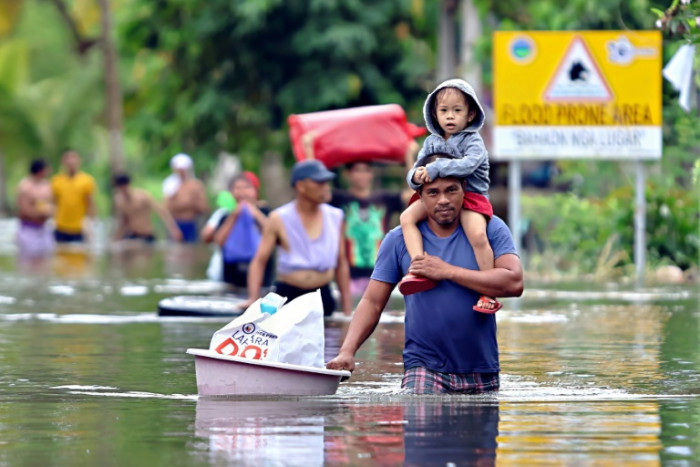Mass Evacuation as Super Typhoon Fung-wong Threatens Philippines
Over 1.2 million people have been evacuated across the Philippines as Super Typhoon Fung-wong approaches, with at least two confirmed fatalities and widespread flooding already reported. The massive storm comes just days after Typhoon Kalmaegi killed 224 people, compounding the disaster response challenges.
Key Developments
- 1.2+ million people evacuated nationwide
- Two confirmed deaths as flooding intensifies
- Landfall expected in Aurora province between 8-11 PM local time
- Nearly 300 flights cancelled in Manila
- Search operations suspended due to safety concerns
Storm Impact and Casualties
Super Typhoon Fung-wong, with a radius covering nearly the entire Philippines, is bringing destructive winds and torrential rainfall to the archipelago. The storm has already claimed two lives: a 64-year-old woman killed during evacuation in Catbalogan City and another person who drowned in flash floods on Catanduanes island.
“Last night, the wind was so strong and the rain was heavy… According to her family members, she might have forgotten something and went back inside her house,” rescuer Juniel Tagarino told AFP, noting her relatives were just 50 meters away when they realized she was missing.
Residents Brace for Night Landfall
In Aurora province, where the eye is expected to make landfall, residents are preparing for the dangerous nighttime arrival. Government worker Aries Ora expressed the unique dangers: “What really scares us is that the expected landfall is at night. Unlike previous typhoons, we won’t be able to clearly see the movement of the wind and what’s happening around us.”
Evacuation centers across Cagayan province are filling with residents like Loretta Salquina, who explained: “We often suffer flooding in our home, so when we were told to evacuate, we evacuated, because we would be trapped. The typhoon might blow away our roofs… We’re safer here.”
Widespread Flooding and Damage
Catanduanes island is already experiencing severe impacts, with storm surges sending waves over streets and floodwaters rising rapidly. Civil defence deputy administrator Rafaelito Alejandro confirmed the region is feeling the typhoon’s full force.
“The waves started roaring around 7am. When the waves hit the seawall, it felt like the ground was shaking,” described Edson Casarino, a resident of Catanduanes’ Virac town.
Verified video shows a church in Virac surrounded by floodwaters reaching halfway up its entrance, while streets in Guinobatan, Albay province have become raging torrents.
Emergency Preparations and Climate Context
Residents in vulnerable areas have employed traditional methods to secure their homes. “They decided to do our tradition of strapping down the roofs with big ropes and anchoring them on the ground, so they won’t be blown away by the wind,” explained provincial rescue official Roberto Monterola.
Government meteorologists predict at least 200mm of rainfall across many parts of the country. Scientists note that storms like Fung-wong are becoming more powerful due to climate change, with warmer oceans allowing rapid intensification and a warmer atmosphere holding more moisture for heavier rainfall.
The emergency comes as the Philippines continues recovery efforts from Typhoon Kalmaegi, which killed 224 people and left 109 missing just days earlier. Search and rescue operations in Cebu have been suspended due to safety concerns from the approaching super typhoon.
Schools and government offices across Luzon, including Manila, will remain closed Monday, with nearly 300 flights cancelled as the nation braces for Fung-wong’s full impact.




